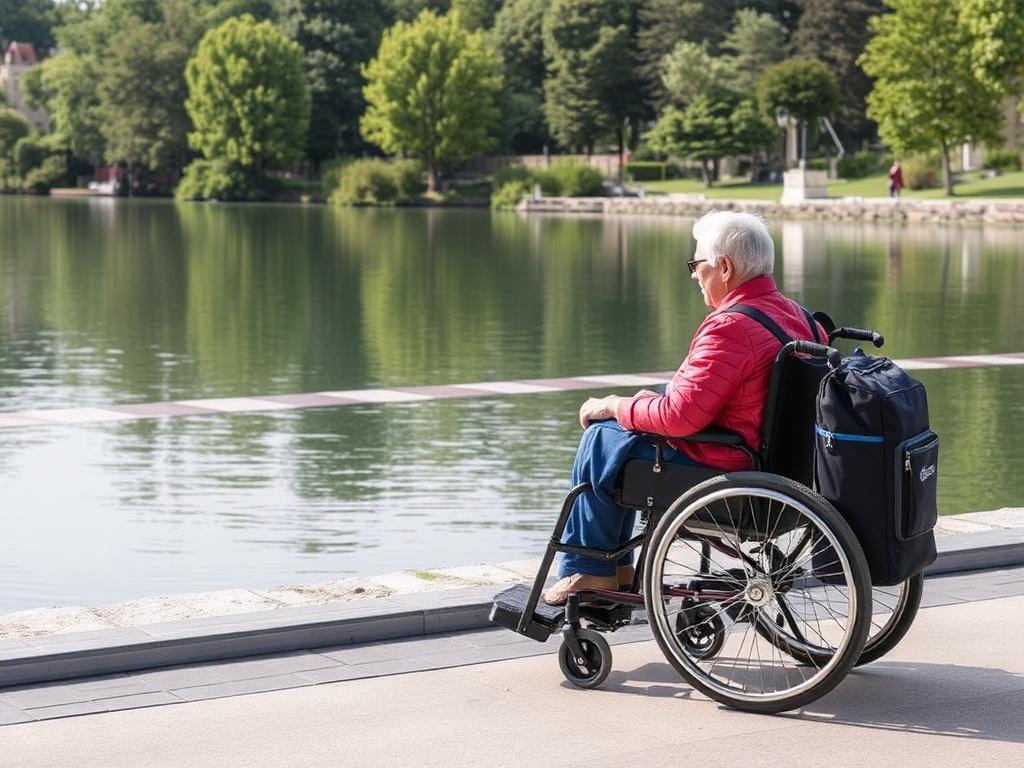
How to Travel with a Disability: Your Complete Guide to Accessible Adventures
Traveling is one of life’s greatest joys, offering new sights, sounds, and experiences that can enrich your life in countless ways. But for many people with disabilities, the idea of exploring the world can feel daunting. “How to travel with a disability” is a common question, and it deserves a thoughtful, compassionate answer. With the right knowledge, planning, and mindset, traveling with a disability is not only possible but can be deeply rewarding. This article will guide you through every step—from choosing your destination to navigating airports, accommodations, and activities.
Understanding the Challenges and Embracing Opportunities
Traveling with a disability means balancing your unique needs with the excitement of new experiences. It starts with understanding the challenges you might face, whether mobility-related, sensory, or medical. However, focusing on limitations alone does no justice to the spirit of travel. Rather, it’s about embracing opportunities—discovering accessible places, using modern tools and services, and connecting with inclusive communities. The world is gradually becoming more accessible, and many destinations now prioritize travelers with disabilities.
Choosing the Right Destination
Selecting a destination is the foundation of your trip. When learning how to travel with a disability, consider accessibility, healthcare availability, climate, culture, and language. Some cities and countries have developed a reputation for being “disability-friendly,” offering well-maintained infrastructure, accessible public transport, and supportive local attitudes.
Key Factors to Consider When Choosing Where to Go
- Accessibility of Public Transport: Buses, trains, taxis, and metro systems should accommodate wheelchairs or other mobility devices.
- Accommodation Options: Hotels and rentals must offer accessible rooms with roll-in showers, grab bars, and sufficient space.
- Medical Services: Proximity to hospitals and clinics is crucial for travelers with ongoing medical needs.
- Language and Assistance: Will you have access to interpreters or staff trained in disability services?
- Terrain and Climate: Some destinations’ physical geography may make travel more challenging, such as hilly areas or extreme weather.
Top Accessible Destinations Worldwide
| Destination | Features | Best For |
|---|---|---|
| Barcelona, Spain | Wheelchair-friendly streets, accessible beaches, excellent public transport | Mobility impairments, sensory disabilities |
| Vancouver, Canada | Inclusive parks, accessible nature trails, good healthcare | All disabilities, nature lovers |
| Tokyo, Japan | Advanced technology, accessible trains, helpful signage | Sensory disabilities, those needing tech assistance |
| Amsterdam, Netherlands | Flat terrain, wide sidewalks, wheelchair-friendly museums | Mobility impairments |
Planning Your Trip: Essential Preparations
After choosing your destination, meticulously planning is the next crucial step in how to travel with a disability. Preparation can reduce stress and ensure smoother experiences when you arrive.
Booking Accessible Accommodations
Many travelers make the mistake of assuming all hotels offering “accessible rooms” meet their specific needs. To avoid surprises, contact the hotel directly to clarify what features their accessible rooms include. Ask about:
- Door widths and maneuvering space
- Roll-in showers versus bathtubs
- Visual and auditory alarms
- Accessible dining and common areas
- Elevator access and parking facilities
Online reviews from other travelers with disabilities can be invaluable in confirming accessibility claims.
Choosing the Right Transportation
For people learning how to travel with a disability, transportation is often the biggest hurdle. Whether flying, driving, or taking trains, you’ll want to ensure your method is as accessible and comfortable as possible.
- Air Travel: Research airlines’ disability services, including wheelchair assistance, oxygen availability, and seating accommodations. Inform the airline well in advance about your needs.
- Car Rentals and Driving: Look for companies offering hand control vehicles or other adaptive equipment.
- Public Transport: Check accessibility apps or websites for up-to-date information about routes and options.
- Assisted Travel Services: Many companies specialize in accessible tours and can handle logistics tailored to your disability.
Packing Smart: What to Bring When Traveling with a Disability
Packing needs vary widely depending on your disability, but some general tips apply:
- Medical Supplies: Bring more than enough medications, spare batteries, and any necessary medical devices.
- Documentation: Carry doctor’s notes, prescriptions, and disability identification cards to avoid issues at security checkpoints.
- Mobility Devices: If you use a wheelchair or cane, ensure it’s travel-ready, and consider carrying repair kits.
- Comfort Items: Neck pillows, noise-cancelling headphones, or eye masks can make your journey more pleasant.
What to Expect at Airports and Train Stations
Airports and train stations can be intimidating, but knowing what to expect and what accommodations are available will ease anxiety.
Airport Accessibility Services
Most airports offer a range of services to assist passengers with disabilities, including:
- Pre-boarding and priority seating
- Wheelchair assistance from check-in to aircraft door
- Assisted restrooms and quiet spaces
- Service animal relief areas
Advance notification is key. Many airlines require you to inform them of your disability and service needs at least 48 hours before your flight.
Navigating Security Checkpoints
Security can be stressful but there are protocols in place for travelers with disabilities. You have the right to request:
- Alternative screening methods
- Assistance if you cannot stand in line
- Additional time to clear security
Keep your medical devices and documentation handy to present to security staff.
Accessible Accommodation and Amenities While Traveling
Once you’ve arrived, choosing the right accommodations and knowing about accessible amenities will be crucial.
Hotel or Rental Features to Prioritize
Make sure your accommodation has:
- Ground floor or elevator access
- Wide doors and hallway clearance
- Roll-in showers and grab bars in bathrooms
- Accessible restaurants or nearby dining options
- Emergency evacuation plans for disabled guests
If you require specialized support, inquire if the staff has experience working with guests with disabilities.
Local Amenities and Medical Support
Before you travel, locate nearby hospitals, clinics, pharmacies, and medical supply stores. For chronic conditions requiring specialist care, contact local healthcare providers in advance to arrange consultations if necessary.
Tips for Enjoying Activities and Sightseeing
Traveling is about experiences, and knowing how to access activities is a key part of how to travel with a disability.
Research Accessibility in Advance
Check websites for museums, parks, theaters, and other attractions that outline accessible routes, restrooms, and assistive technology.
Consider Adaptive Tours
Many tour companies offer experiences designed for people with disabilities, including wheelchair-accessible vehicles, sensory-friendly environments, and guides trained in disability awareness.
Use Technology to Your Advantage
Apps designed for accessibility can help you find nearby accessible restrooms, transportation stops, or even alert you to events with accessibility services.
Handling Emergencies and Unexpected Situations
Travel can sometimes be unpredictable. Being prepared helps you handle emergencies confidently.
Have a Plan
Share your travel itinerary and emergency contacts with a friend or family member. Carry a copy of your health information and a list of your medications.
Know Your Rights
Familiarize yourself with disability rights in your destination country, including laws related to discrimination, accessibility, and medical care.
Stay Connected
Have a working phone with roaming enabled or a local SIM card. If you have hearing or speech impairments, consider apps for emergency communication.
Embracing the Joy and Freedom of Travel
Traveling with a disability may require more preparation and careful planning, but the benefits far outweigh the challenges. The world is becoming more inclusive every day, and millions of others have paved the way by advocating for accessibility and sharing their stories. Your journey can be more than just a trip—it can be a powerful statement of independence, resilience, and joy. Whether it’s discovering new cultures, making memories with loved ones, or simply enjoying the thrill of adventure, travel with a disability is about reclaiming freedom and enriching your life.
Conclusion
Traveling with a disability is not only achievable but deeply fulfilling when approached with the right knowledge and planning. By choosing accessible destinations, arranging suitable accommodations, and understanding available transportation and support services, you can confidently navigate the complexities of travel. Preparing for emergencies, advocating for your rights, and embracing adaptive technology further empower your journey. Remember, the world is vast and full of opportunity—your disability does not define your limits but invites you to explore creative ways to experience the richness of travel. Whether it’s your first adventure or one in a long line of journeys, traveling with a disability opens doors to discovery, connection, and unforgettable memories. So pack your bags, plan carefully, and step boldly into the accessible adventures waiting for you.




